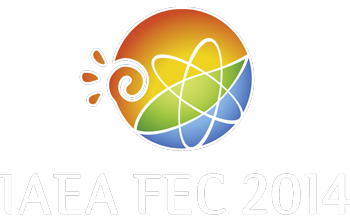Speaker
Dr
Tatyana Sizyuk
(USA)
Description
Tungsten is the leading high-Z candidate surface material for future tokamak divertor and first wall plasma facing components. There are good reasons for this choice including low activation, high melting point, good thermo-mechanical properties, low sputter erosion, and low tritium retention/co-deposition. However, there are concerns about He, D-T, and neutron-induced microstructure integrity, fatigue, dust, and other issues, and a general major concern about relying on one material. To broaden the options for fusion development we identified and examined five potential alternative high-Z plasma facing materials: zirconium, niobium, molybdenum, hafnium, and tantalum. These can potentially serve as full-thickness structural materials, or thinner coating materials, depending on the plasma environment, hydride-formation, etc. We assessed these materials from three initial standpoints: neutron-induced activation, sputter erosion/redeposition, and plasma transient response. This initial analysis is encouraging showing: 1) environmentally attractive activation/waste disposal for a commercial power plant divertor surface, using advanced recycling, 2) acceptable sputtering erosion/redeposition performance, similar to a tungsten divertor, and 3) concerns about the transient response of the alternative materials but not fundamentally different than concerns for tungsten. We identify future steps needed to advance the qualification of these materials.
| Country or International Organisation | USA |
|---|---|
| Paper Number | MPT/P7-28 |
Author
Prof.
Jeffrey Brooks
(Purdue University)
Co-authors
Prof.
Ahmed Hassanein
(Purdue University)
Dr
Laila El-Guebaly
(University of Wisconsin)
Dr
Tatyana Sizyuk
(USA)

